I promised you a (virtual) visit to a cork forest so come with me to this one south of Lisbon, in Portugal, which produces 60 per cent of all the wine stoppers in the world.
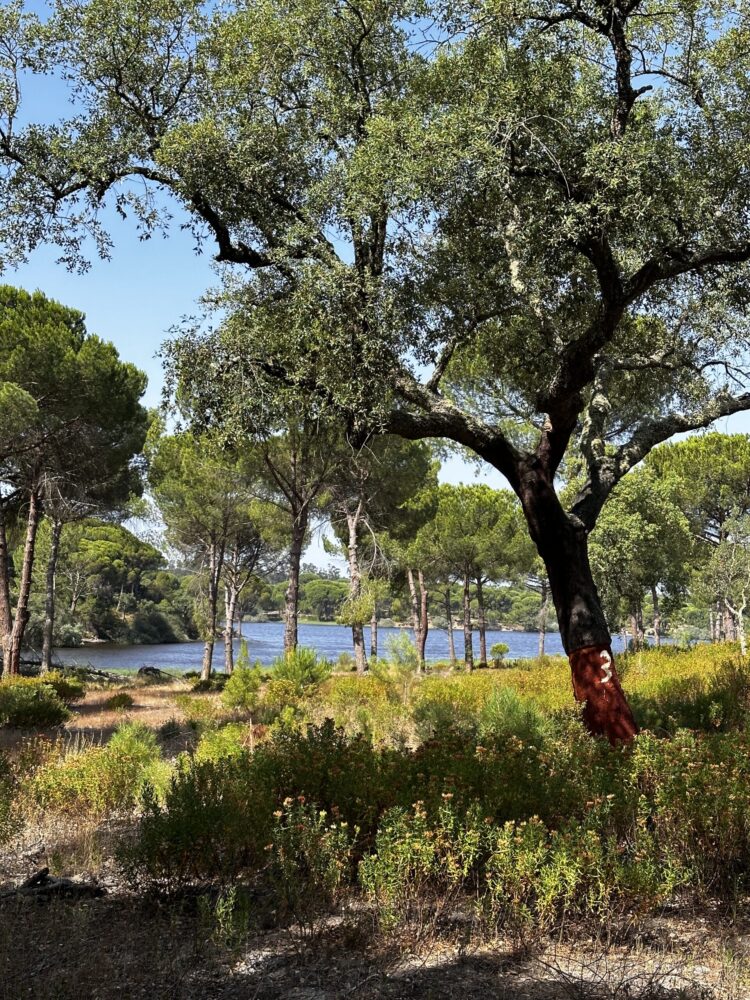
But let’s pause while you digest that because did you know – I didn’t – that a cork tree’s bark isn’t good enough to even BE a cork stopper for the first 43 of its 200-year life span and that until some clever people came up with the idea of flooring and other products most of the cork was just waste.
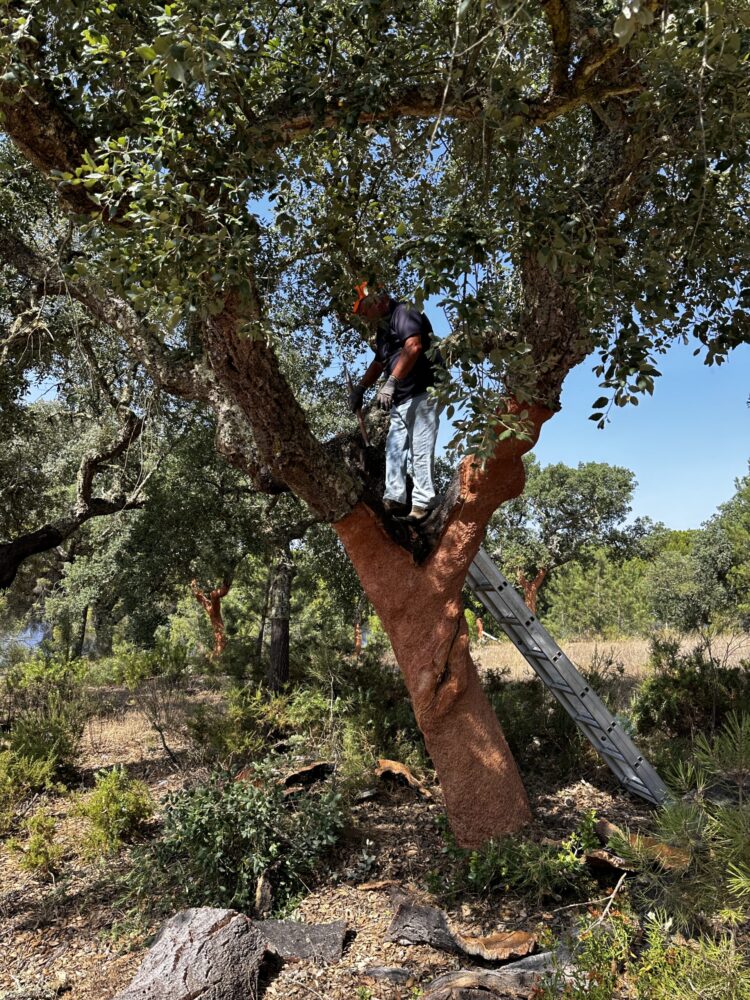
These days the owners of this forest have a zero waste policy and are working to keep their natural products as sustainable as possible. I travelled with a small group as the guest of Colour Flooring who sell Corka (a range of waterproof cork that has won awards) supplied from this forest and whose production methods are so rigorous that even the dust is swept up and used to fuel the machinery. Some 65 per cent of the factory’s energy comes from this biomass fuel.
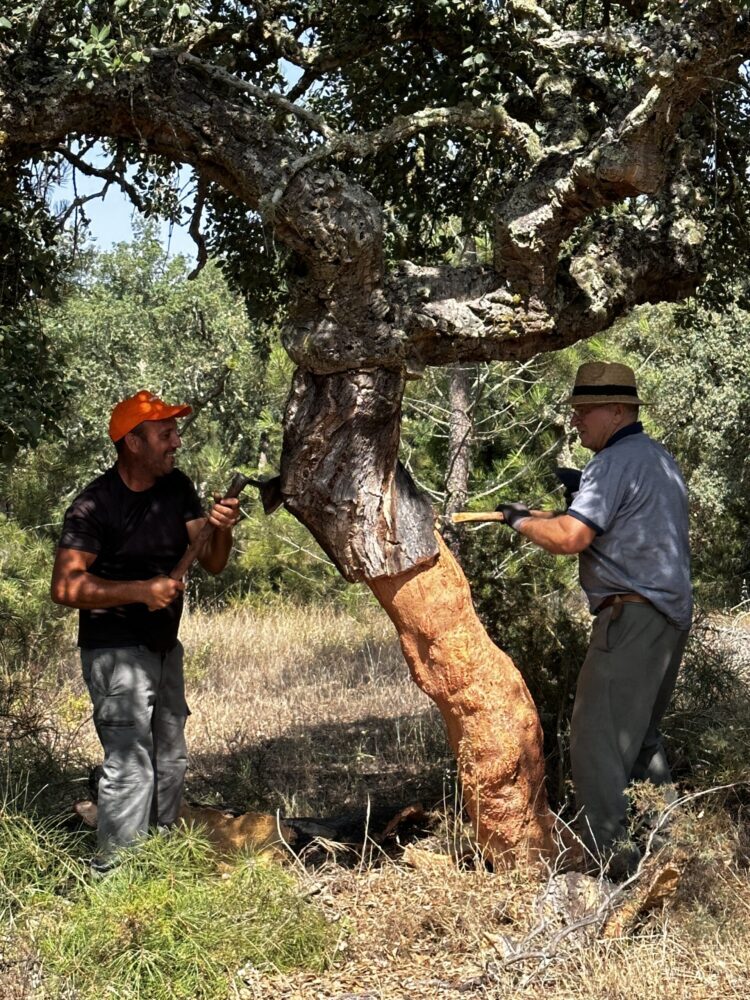
But back to the forest. When the tree is first planted it is 25 years before the bark can be harvested. The reason cork is sustainable is because it is formed from the bark which regrows so the tree doesn’t need to be cut down.
After the first harvest, the cork is not mature enough to be used for wine bottles so this is where the flooring is created. Nine years later the bark has regrown, the tree is now 34 years old and the second harvest takes place. This cannot be used for corks either so once again, it becomes flooring and construction materials.
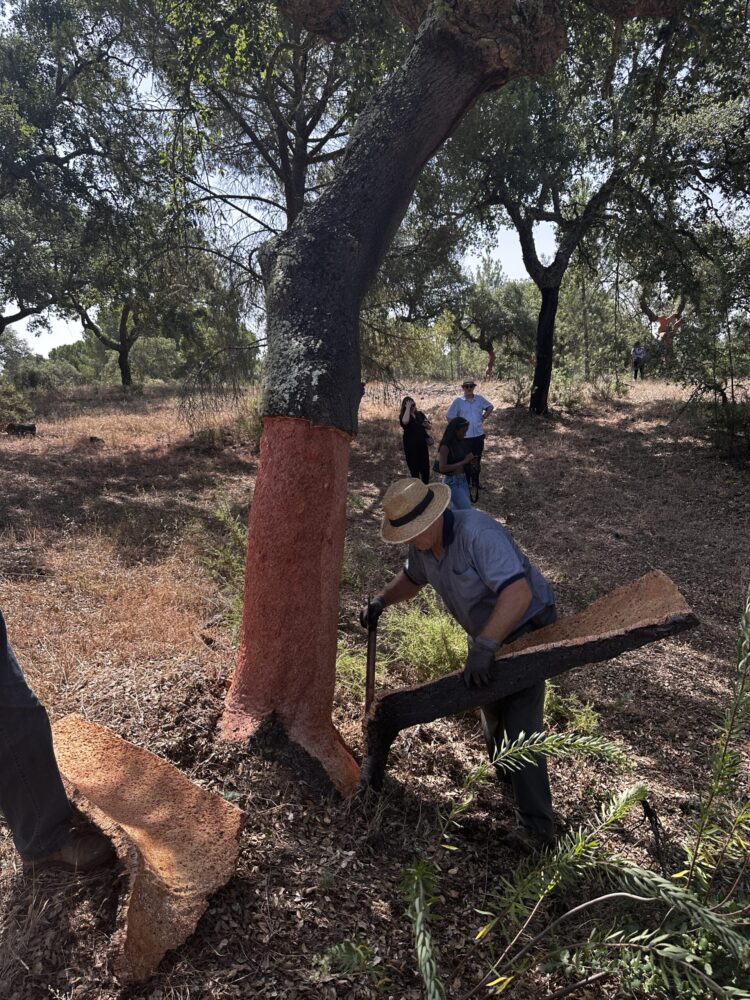
Finally, when the tree is 43, the cork is suitable for wine bottles. But, it’s a different story for champagne bottles. They are formed from ground down cork power with a disk fitted on the end to prevent the granules from coming into contact with the liquid.
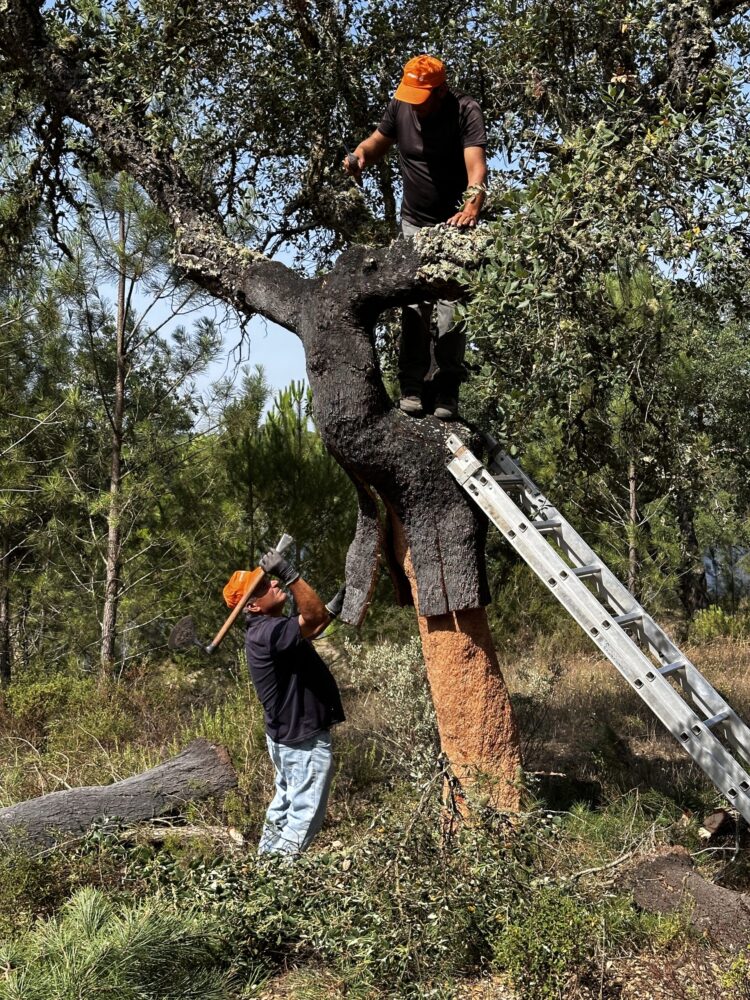
This forest now supplies 25 million stoppers a day and sells six billion a year. Because of the strict harvest and rotation policy, the trees are painted with a number so harvesters can see at a glance when it was last stripped. They don’t completely rely on that as the white paint fades over nine years so there are actual records kept as well.
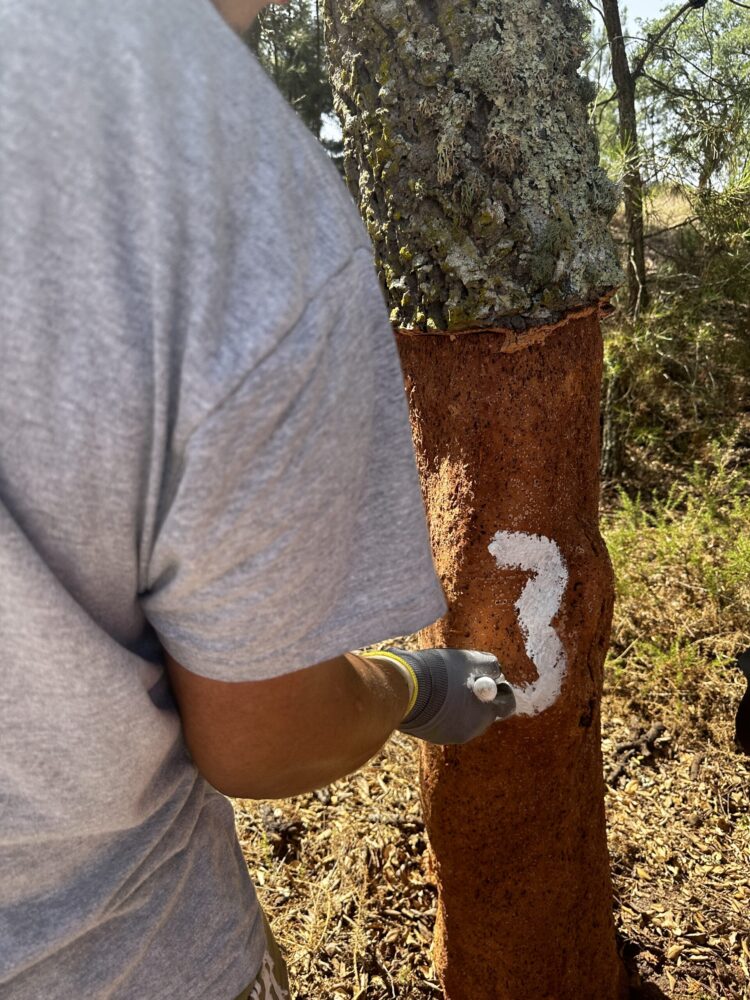
Harvesters only work in the cork forest between May and August. The work is highly skilled and they are, apparently, the best paid agricultural workers earning around €150 a day. The rest of the year they might work in vineyards or orchards.
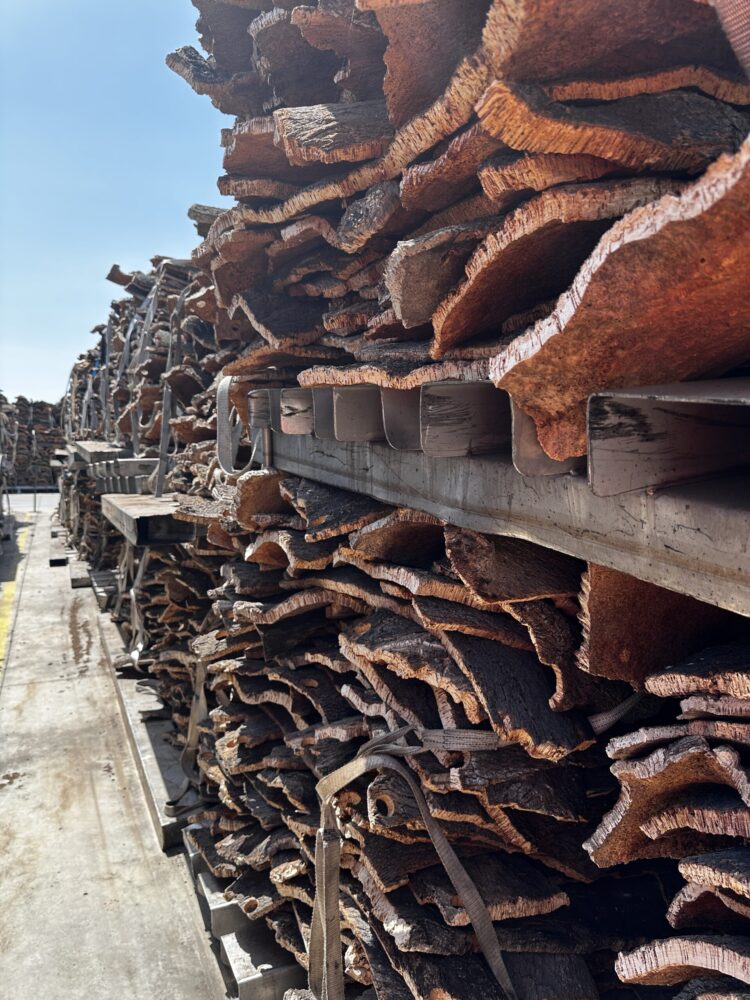
Their axes, which are heavy and sharp (I was allowed to hold one) are often passed down from generation to generation.
Once the bark is stripped it is transported to the factory where it remains outside for six to nine months to stabilise. Then it is boiled for an hour to clean it before it starts its manufacturing journey towards a floor or a bottle.
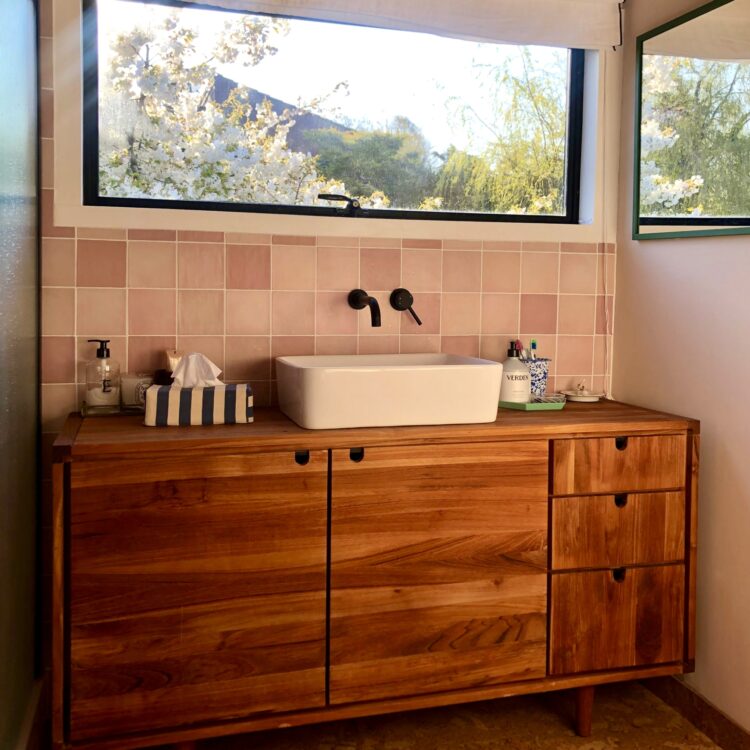
Did you know that cork trees are naturally fire retardant and are planted close together to repel forest fires. The flames will pass between them and leaves the trees still standing.
I travelled as a guest of Colour Flooring.
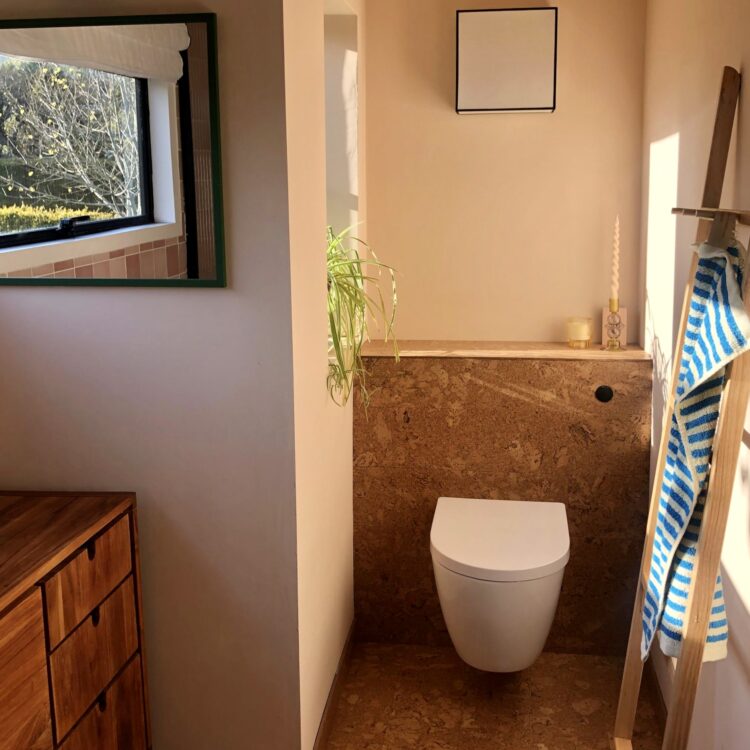






Mrs. Ainee C. Beland…..I totally agree with you. Trees are indeed sentient beings. There is no scientific doubt about that. Humans, also sentient beings, can suss and honour that fact……in my respectful view. The natural world even without humankind is a deeply beautiful, efficient, and extraordinarily complex, functioning network. The bark on these, or any trees, par example, is an essential part of the infinite majesty of inclusion that is this natural and functioning world. Earth. The Balance of Nature. As flagged up in replies, conscientious annnd contentious human issues, needs and desires eg. how to seal wine bottles, or what material to use on floors will always jostle in the wider scheme and context of how to honour and respect this planet earth. A verrry tricky subject indeed. IMV.
We have had a cork floor in our kitchen for 14 years now. It’s very comfortable to stand on for prolonged periods, is quiet to walk on, and easy to maintain. Loved your trip report, Kate. So interesting.
Pure brilliance and I LOVE cork, it’s a gorgeous material. Sustainable in such a way that involves no extra material or cost to the earth to make it happen, unlike say soya, or flax or anything that needs to be planted over and over again using resources like fuel…and minimal processing. It’s such a great story. Thank you
Wow! How completely fascinating! I never knew any of this Kate so thank you for sharing. Great story over the dinner table when opening a bottle of wine!
Not to rain on anyone’s well-intentioned and expertly considered consumer parade….but do we NEED to do this to these lovely trees? I can’t bear to look at these pictures of bark-stripped trees, in this otherwise conscientiously detailed, factual, and informative offering.
I looked it up and it doesn’t harm the tree to take the bark – other trees can die if you strip their bark but not the cork tree. That’s what makes it sustainable. And if we don’t have cork bottle stoppers then they are plastic or screw top so I think cork is probably the best thing. But I know what you mean – they do look a bit like they have taken their trousers and pants off!
Great insulation material also
What an amazing tree! Thanks Kate. Storm Arwen’s devastation lost us around ten trees in a wild part of our garden (mostly pine). Our tree guys used the fallen casualties to make paths around the wild & hilly area. Sawing, chopping, chipping & replanting various lovely trees, we now have a useable (still wild) area to enjoy. One of our newbies is a Portuguese cork! We were sceptical at first but it is thriving after over a year. The tree guys keep coming back to check in an almost worshipful way. I now understand fully and will continue the love 🙏
Thank you for this fascinating report. Who knew! Cheers from Canada!